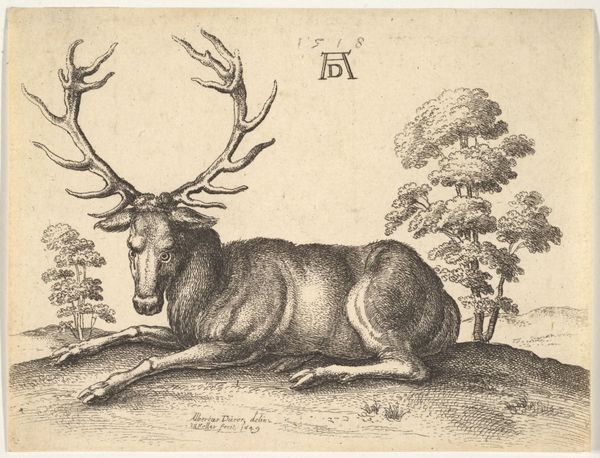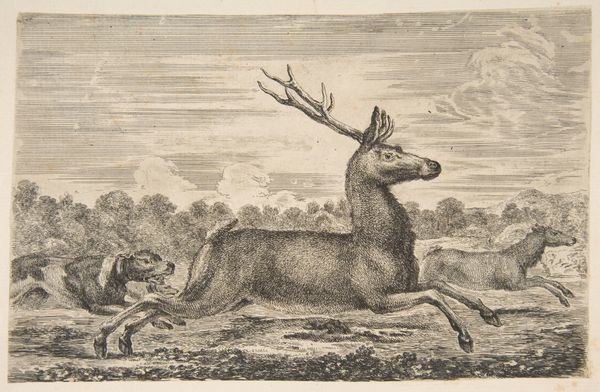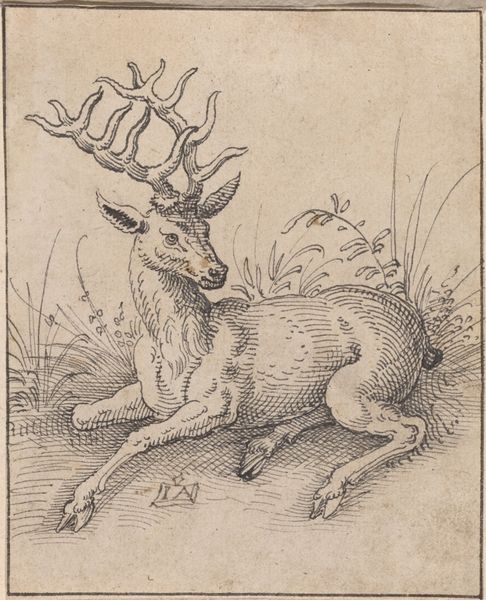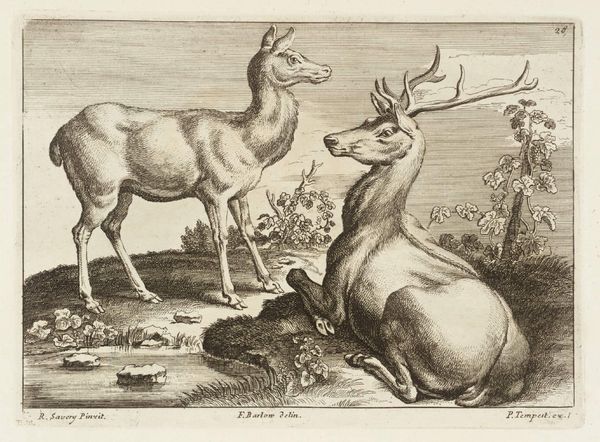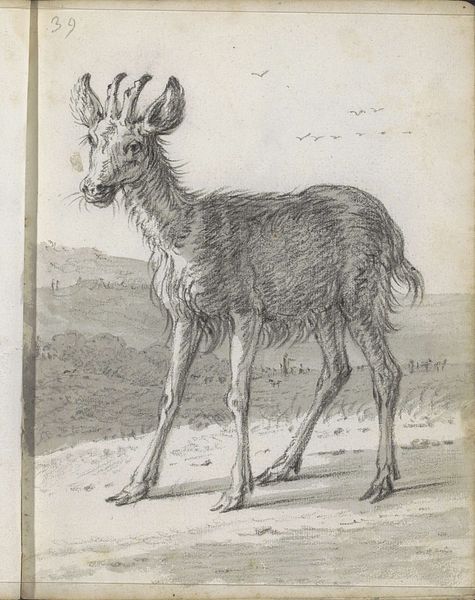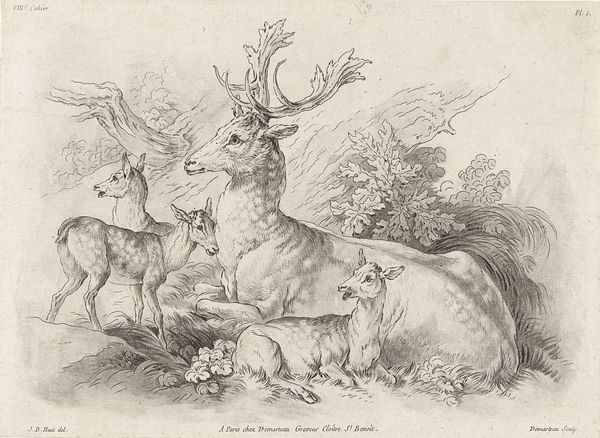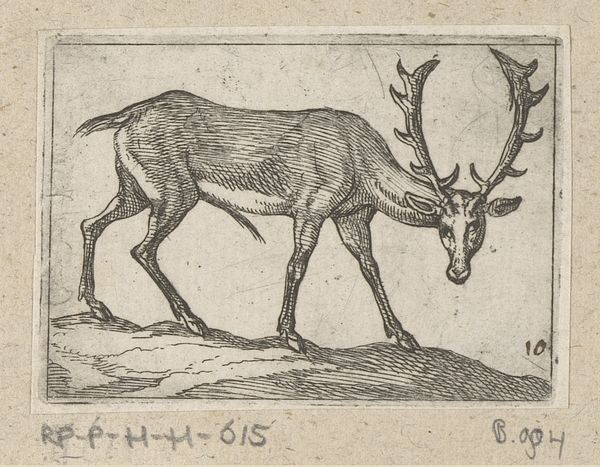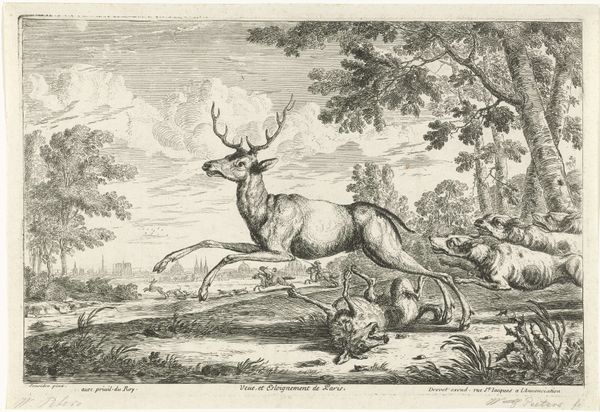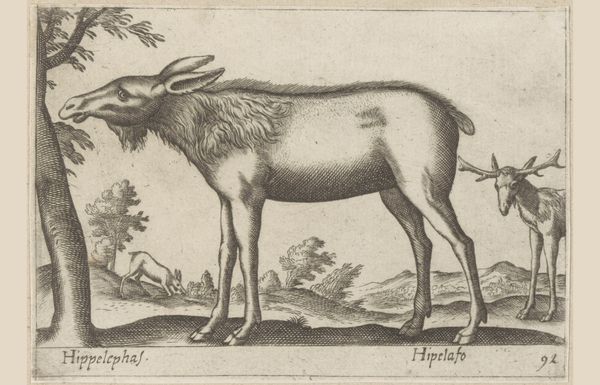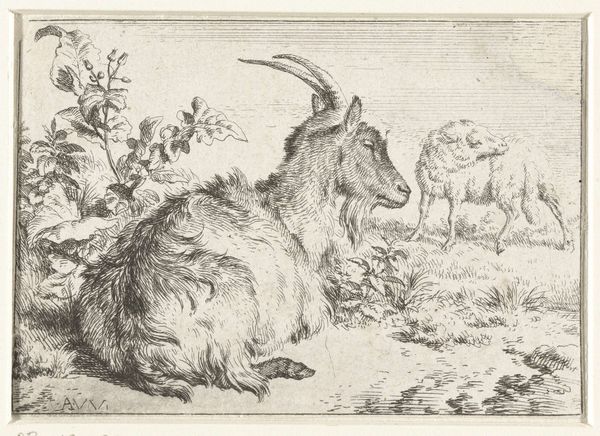
drawing, print, etching
#
drawing
#
baroque
#
animal
# print
#
etching
#
landscape
Dimensions: sheet: 3 3/8 x 4 7/16 in. (8.5 x 11.3 cm) cut c. 2 x 2 mm in height and width
Copyright: Public Domain
Curator: Here we have Wenceslaus Hollar's "Stag lying to right," an etching from 1649 currently housed at the Metropolitan Museum of Art. What are your first thoughts? Editor: Well, immediately I’m struck by the material presence the etching has. The crispness of the lines, the careful depiction of the stag’s fur, and the sheer labour involved in this. It feels…intimate and grounded. Curator: Precisely! Notice the composition; the stag occupies a significant portion of the visual space, yet there is a remarkable balance achieved through the placement of trees on either side, acting almost as structural bookends. What do you make of Hollar's choices in terms of lines? Editor: The varied density and direction of the etched lines indicate a conscious awareness of conveying texture, form, and mass. We can almost feel the roughness of the tree bark, or the heaviness of the animal's body through its meticulous details. It tells us of a close interaction with, and observation of, nature itself, mediated by craft and production. Curator: The Baroque sensibilities shine through. It is not merely a portrait of an animal but the depiction of an experience, loaded with meaning. Consider how the landscape integrates with the subject to evoke a sense of idealized nature—serene yet grand. Editor: This wasn’t necessarily meant as a grand artistic statement. Consider the print-making process—each line carefully laid—meant for multiple reproductions, catering to a wider audience that might consume these images, each bearing Hollar’s mark. Curator: Good point. There is definitely the accessibility factor intrinsic to prints and their ability to democratize images during that time. Though beyond sheer replication, each print presents a meditation on the essence of "stag-ness". The semiotic readings we could apply are boundless. Editor: I suppose you’re right. Reflecting on this piece I’m drawn back to its craftsmanship, where nature and the production meet. This print really allows us to delve deeper into its story, reminding us how close looking reveals more than we expect. Curator: Indeed, the way Hollar uses line and form serves to invite multiple levels of visual and intellectual decoding. Every stroke is designed for contemplation and engagement beyond mere recognition. It seems this etching has given us much food for thought.
Comments
No comments
Be the first to comment and join the conversation on the ultimate creative platform.
